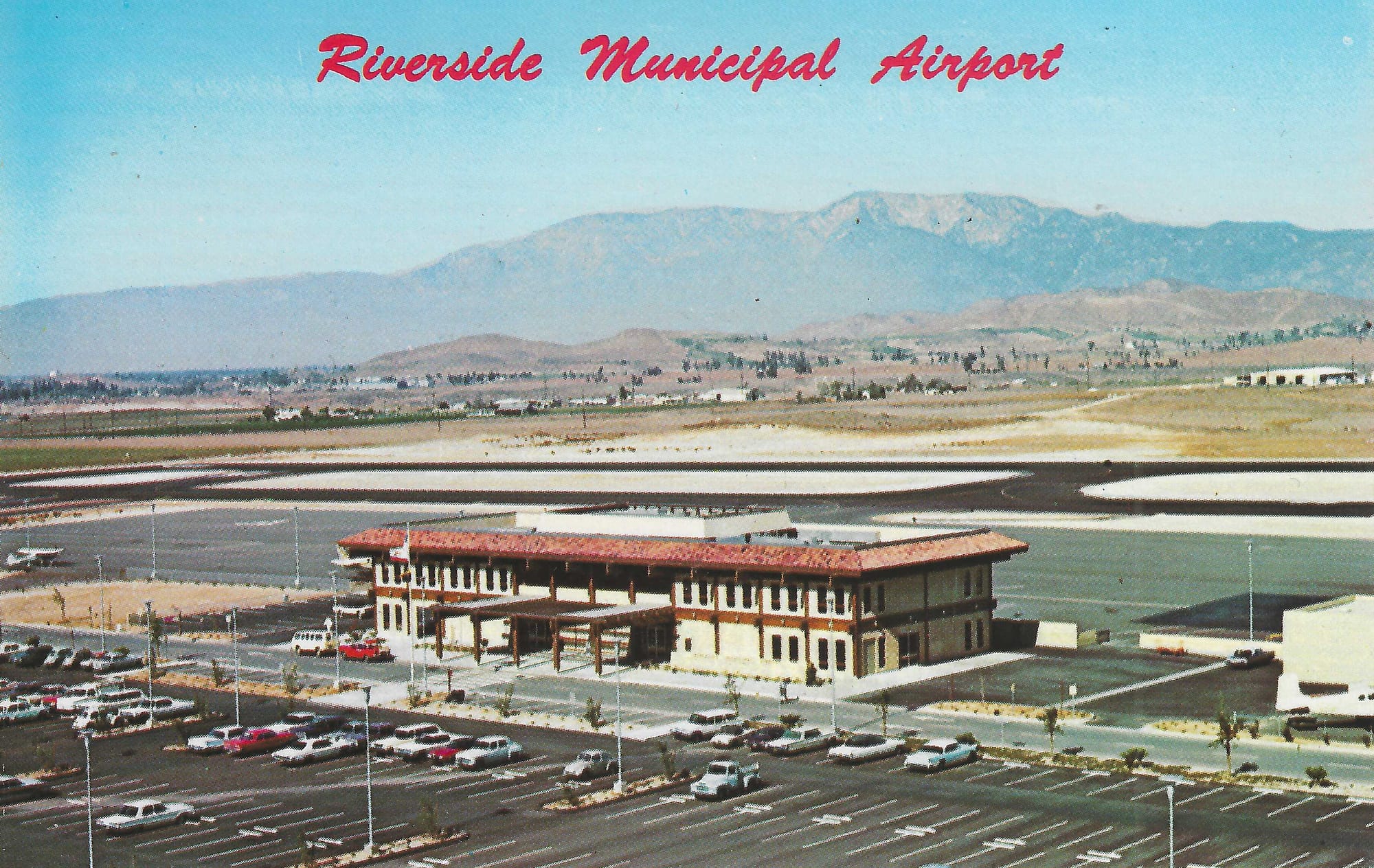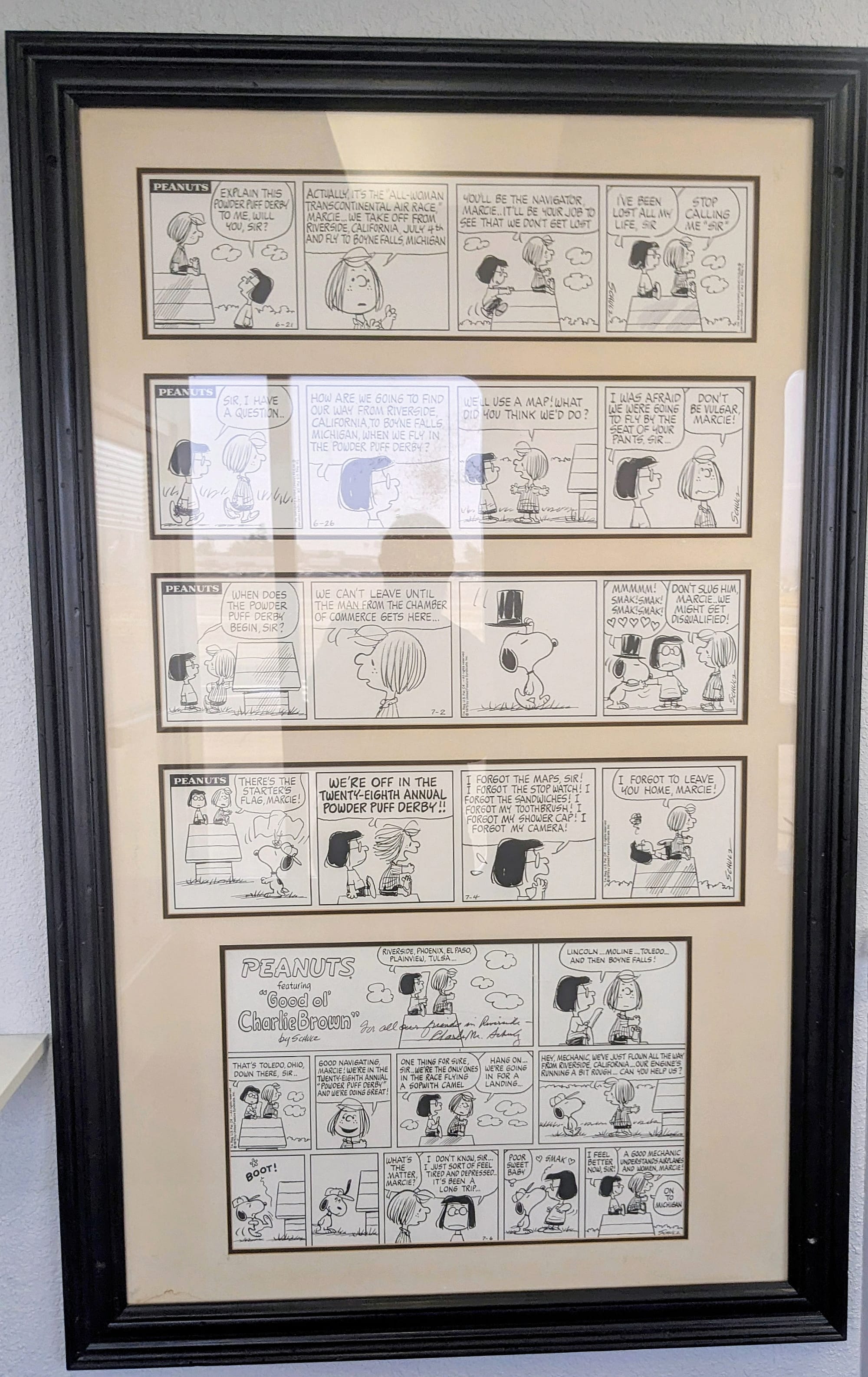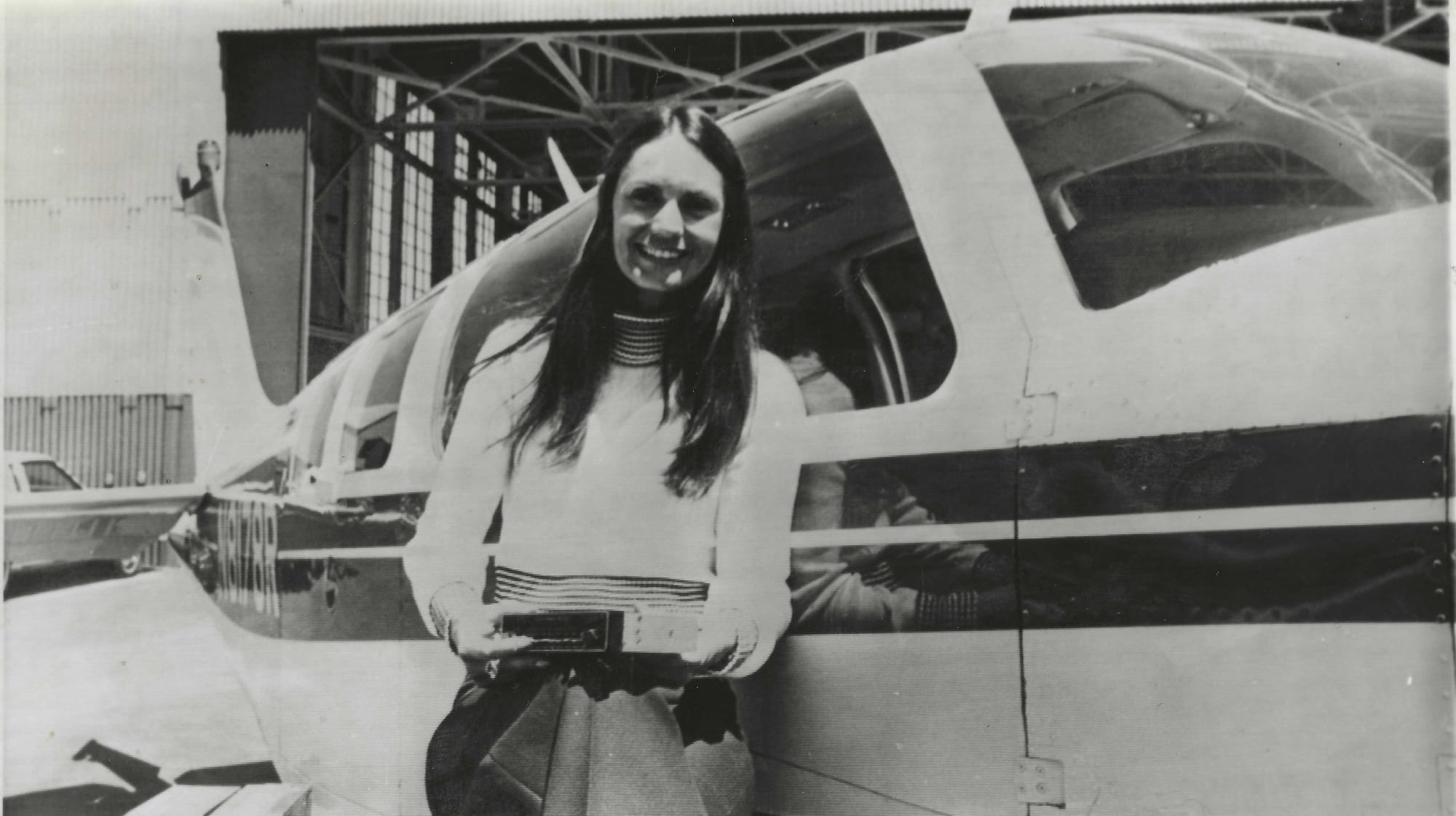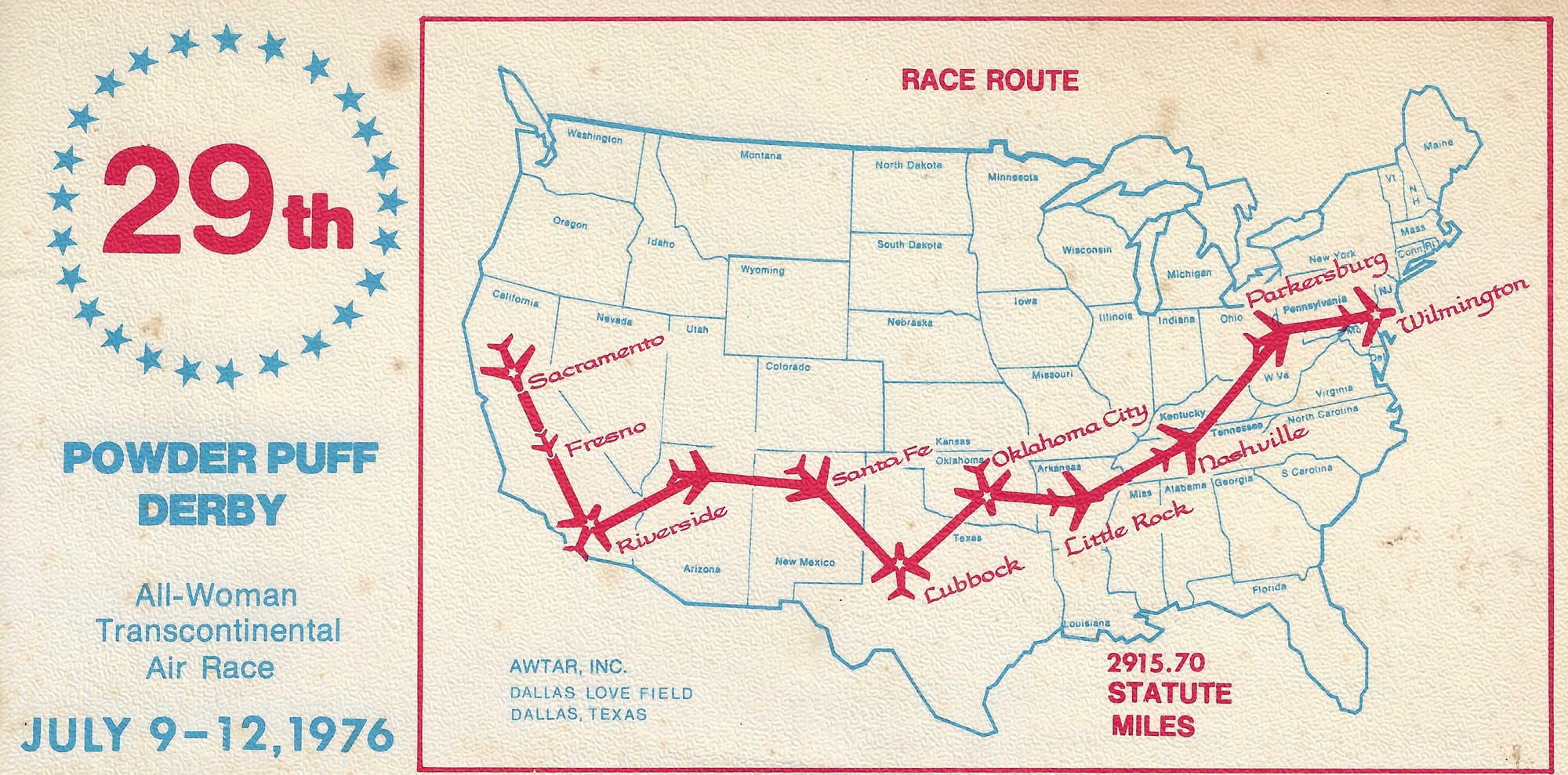Your Guide to Shopping Small This Holiday Season
From Main Street to neighborhood shops across the city, here's where to find unique gifts while supporting local businesses.
Fifty years ago, Riverside Airport launched the 28th annual all-women’s transcontinental air race, drawing pilots from across the nation and marking a milestone in aviation history and local pride.

Fifty years ago, on July 4, 1975, an extraordinary event took place in Riverside. The 28th Powder Puff Derby took off from Riverside Airport on its transcontinental airplane race. The annual race, featuring women pilots flying cross-country, began in 1947. It was originally called the Jacqueline Cochran All-Woman Transcontinental Air Race. The event had been scheduled for Riverside in 1974 but was canceled due to fuel shortages.

The 1975 race began in Riverside on July 4 and ended 2,591 miles later in Boyne Falls, Michigan. The planes flew through Phoenix, Arizona; El Paso and Plainview, Texas; Tulsa, Oklahoma; Lincoln, Nebraska; Moline, Illinois; and Toledo, Ohio. The airplanes were stock models with engines ranging from 145 to 450 horsepower. Pilots flew solo or with a co-pilot. The Powder Puff Derby spanned three days. Contestants were timed between stops, and their times adjusted by a handicap system. A computer was used to determine the winner. Pilots needed to finish by 6 p.m. on July 7 to qualify for part of the $14,000 prize money.
A total of 102 planes registered, but four were scratched before the final deadline. One additional plane, piloted by Howard Rosen and Darryl Greenamyer, attempted to join the all-women’s race, claiming discrimination. A federal judge ruled against them, stating the case did not meet the requirements of the Civil Rights Act.
Among the entrants were Gloria Huffman and Tookie Henley, a pair of Riverside grandmothers. Both had held pilot’s licenses for less than two years, and the 1975 event was their first race. The Riverside Chamber of Commerce sponsored the pair, and their airplane carried the Chamber’s logo on its tail — “The Happy Side is Riverside.”

Another pilot, Marilouise Goodman Hurley, was born in Riverside and attended Riverside schools through junior college before moving to El Centro.
Riverside Air Service sponsored a plane flown by Thelma Michelson of Irvine and Dorene Christensen of Santa Ana. Other teams included four mother-daughter teams, a grandmother and granddaughter team, an all-Navy team, and one team from Japan.
The most famous name among the pilots was Schulz. Jean Schulz, wife of Charles Schulz, creator of the Peanuts comic strip, flew as co-pilot with her mother, Pamela Vander Linden, as pilot.
In honor of their participation, Charles Schulz drew a series of comic strips from June 21 to July 12, 1975. The panels featured Peppermint Patty as the pilot and Marcie as her navigator. They rented a Sopwith Camel (Snoopy’s doghouse) for their airplane. Snoopy appeared as the mechanic, the representative of the Chamber of Commerce, the starter, a motel operator, and finally the pilot who repossessed his plane for a critical World War I mission before the race concluded.


Cartoon Panels hanging on the wall in the administration offices of the Riverside Airport. (Courtesy of the Riverside Airport)
One plane had a brush with disaster. Maybelle Fletcher and May Byers of Texas were 22 minutes out of Tulsa when their propeller flew off. The two calmly piloted their disabled plane to the nearest airfield, where they landed safely.
The first plane to land in Boyne Falls was piloted by Margaret Ringenberger of Grail, Indiana. On Sunday, July 6, 70 of the planes reached Boyne Falls. Over 20 aircraft were stranded at stop points between Lincoln, Nebraska, and Toledo, Ohio, because of thunderstorms. Another 27 planes arrived at the race’s end before the deadline on Monday.

Official results were calculated using average ground speed adjusted according to the FAA’s mile-per-hour rating. A Wang Laboratories computer was brought from Detroit to Boyne Falls to calculate the adjusted scores. The race winner was Trina Adela Jarish of Costa Mesa, California, with an average ground speed of 204.33 miles per hour. She flew a Beechcraft Bonanza. Jarish received the top prize of $5,000 plus $1,400 from Beechcraft Corporation for flying one of their aircraft.


Left to right: Photo of Powder Puff Derby winner, Trina Jarish and a postcard from 1976 Powder Puff Derby. (Author’s Collection)
The Riverside entrants did not fare as well. In their first race, Gloria Huffman and Tookie Henley finished 85th. One place ahead was the Riverside Air Service plane flown by Thelma Michelson and Dorene Christensen.
The following year, the race started in Sacramento and ended in Wilmington, Delaware. Riverside was included as a main stopover. The 1976 race was the last Powder Puff Derby. Starting in 1977, the Air Race Classic continued the tradition of all-women cross-country air races.
Let us email you Riverside's news and events every morning. For free!